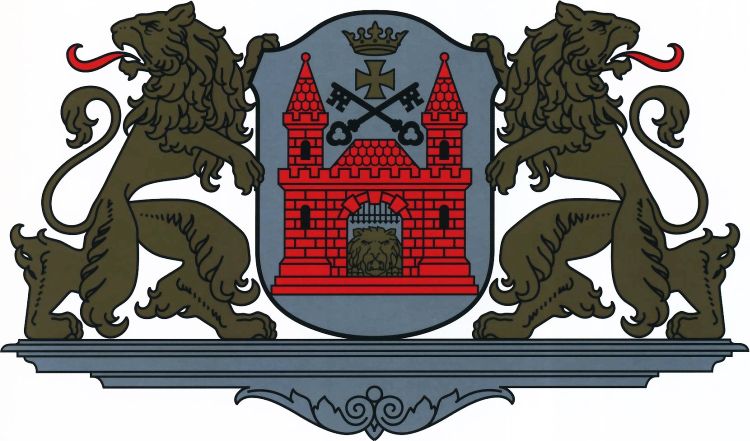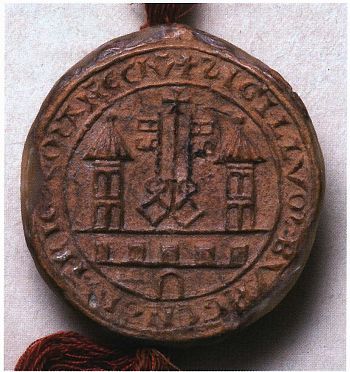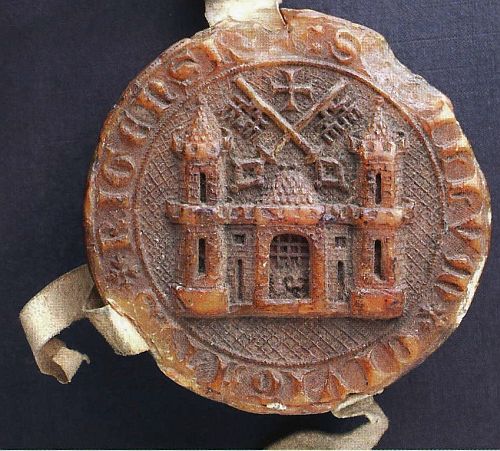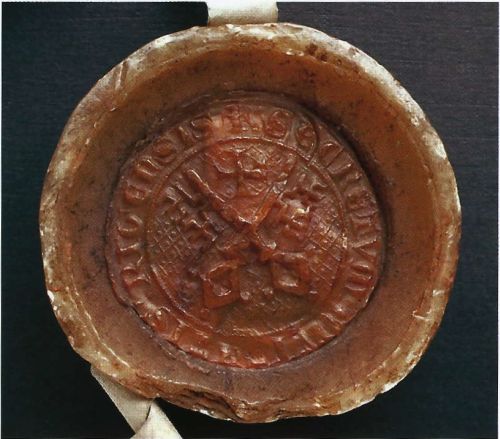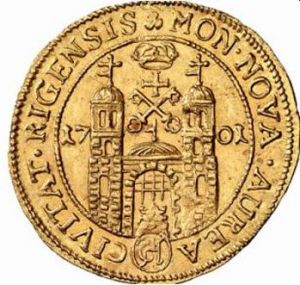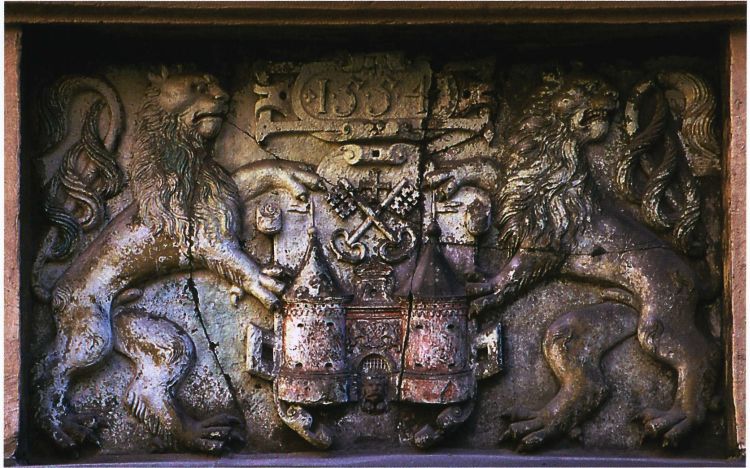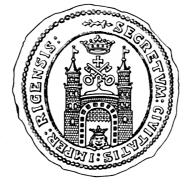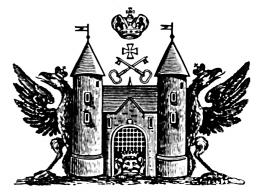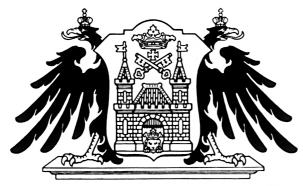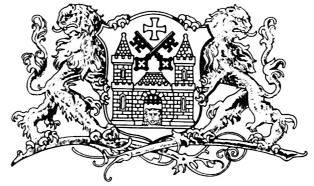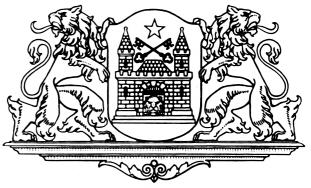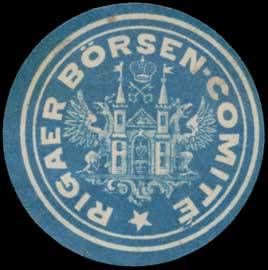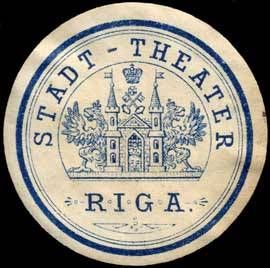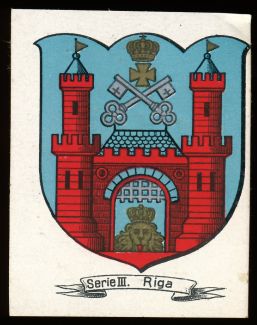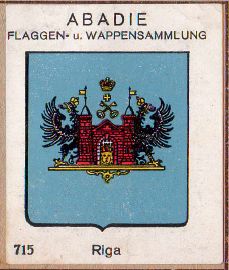Rīga: Difference between revisions
Knorrepoes (talk | contribs) |
Knorrepoes (talk | contribs) m (Text replacement - "igar bond" to "igar band") |
||
| Line 66: | Line 66: | ||
|align="center"|[[File:0715.aba.jpg|center|Arms of {{PAGENAME}}]] <br/>The arms in the [[Abadie]] albums | |align="center"|[[File:0715.aba.jpg|center|Arms of {{PAGENAME}}]] <br/>The arms in the [[Abadie]] albums | ||
|- | |- | ||
|align="center"|[[File:2082.wi2.jpg|center|300 px|Arms of {{PAGENAME}}]] <br/>The arms on a Dutch [[Willem II]] cigar | |align="center"|[[File:2082.wi2.jpg|center|300 px|Arms of {{PAGENAME}}]] <br/>The arms on a Dutch [[Willem II]] cigar band | ||
|} | |} | ||
Revision as of 09:08, 17 February 2020
| Heraldry of the World Pasaules heraldika |
| Latvian heraldry portal Latvias ģerboņi Latvijas heraldika |
|
RĪGA
Region : Vidzeme
Official blazon
Sudraba laukā savrups sarkans robots ķieģeļu mūris ar diviem torņiem un jumtu starp tiem. Atvērtos vārtos ar paceltu režģi pretī zelta lauvas galva. Augšā zelta ķetnu krusts, virs tā zelta kronis, zem tā - divas sakrustotas melnas atslēgas. Vairoga turētāji: divas zelta lauvas ar sarkanu mēli un atpakaļ pagrieztu galvu stāv uz pelēkas pamatnes.
Origin/meaning
The arms were granted in 1925
Riga was first time mentioned in written sources in 1198 as a town at small river Riga (Ridzene) in the land of Livonian people. City rights were granted in 1201 by the bishop Albert, initiator of christening and conquest of Livonian and Baltic people. He introduced also an explanation of city name as derived from Latin "rigata" ("irrigated"). It should symbolize an irrigation of dry pagan souls by Christianity.
The first known picture of the city arms is from a 1225 seal. It already contains main elements of arms: city gate with towers and two keys. The gate symbolizes city rights and keys symbolize St. Peter, a first patron of Riga.
| The seal of Riga in 1225. |
The large seal of Riga in the 14-15th century. |
| The 14th century small seal |
The arms on a coin from 1581 |
| The arms on a coin from 1643 |
The arms on a coin from 1701 |
Two supporting lions were added to the arms in the 16th century. They should mean citizens' power and bravery. The lions were derived from the Swedish national arms, as Riga belonged to Sweden at the time. The small cross in the chief was also replaced by a crown,representing the Swedish King.
| The arms in 1554 |
| The seal from 1707 with a crown |
The lions were substituted by Russian eagles in the time of Russian empire (from 1710 to 1914).
| The arms in 1723 |
The arms in 1788 |
Proposed arms in 1904 |
In 1923 the lions were restored. In 1925 the new design of the arms was adopted.
| The arms in 1923 |
The arms were abolished in 1940, when Latvia was annexed by the USSR. In 1968 efforts were taken to restore the arms with soviet-style adaptations. In 1988 the arms were restored almost similar to the arms of 1925, but with red five-pointed star.
| Proposed arms in 1968, 1987 and 1988 |
Great arms in 1988 |
In 1990 the design of 1925 was confirmed again.
| Seal from around 1900 |
Seal from around 1900 |
Seal of the theater, around 1900 |
| The arms in the Continentale Verlags-Anstalt album, +/- 1910 |
The arms in the Abadie albums | |
| The arms on a Dutch Willem II cigar band |
Contact and Support
Partners:
Your logo here ?
Contact us
© since 1995, Heraldry of the World, Ralf Hartemink 
Index of the site


